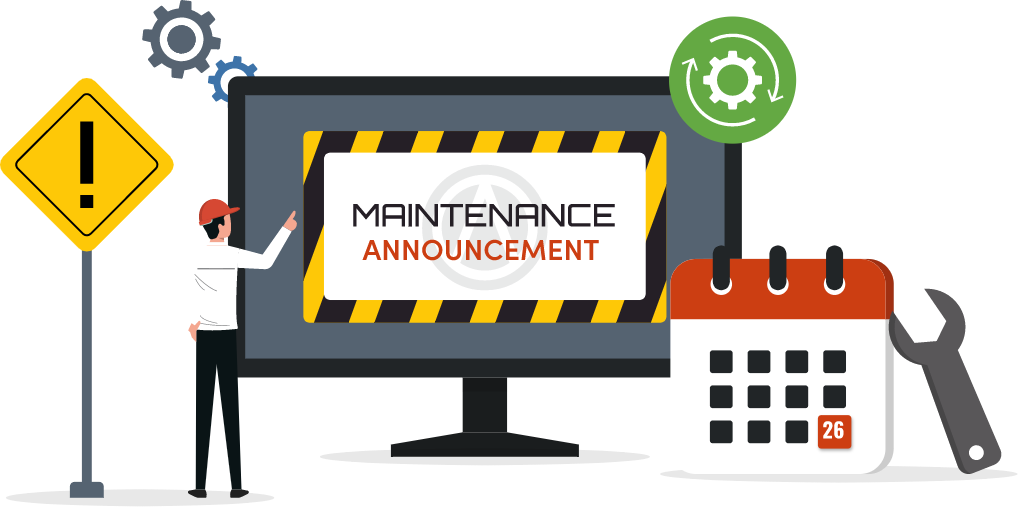How can I ensure the onboarding process stays consistent?
Use a written checklist, update it as procedures or tools change, and track progress for every new hire. Consistency ensures each employee gets the same level of preparation and support.
New Employee Onboarding Checklist for Restaurant Owners
Overview
Hiring a new team member in a restaurant isn't just about showing them where things are or how to use the cash register. It's about helping them get started on the right foot in a fast-moving, sometimes stressful environment. Restaurants often face high turnover, with many employees leaving in the first few months. One big reason is that they don't feel prepared or supported when they start.
A clear onboarding plan helps new employees understand their role, learn the tools they need, and feel comfortable with the team. It also makes life easier for owners and managers, because it reduces mistakes, confusion, and extra training time later.
This guide is a practical checklist for restaurant owners. It covers everything from before the new hire's first day to the first few weeks on the job. It focuses on making the process smooth, simple, and supportive. The aim is to help new employees learn faster, feel welcome, and become productive team members, while giving restaurant owners a clear plan so nothing important gets missed.
Pre-Arrival Preparation

Getting a new employee off to a strong start begins before their first day. Taking a few simple steps can make their introduction smoother and less stressful for both them and your team. Here's a practical checklist -
1. Prepare the Paperwork
Have contracts, tax forms, and any local compliance documents ready in advance. This ensures the first day focuses on learning and orientation rather than administrative tasks.
2. Set Up Workstations and Equipment
Make sure uniforms, name tags, aprons, or kitchen tools are ready. A clean, organized station shows the new hire that you've planned for them and helps them feel welcome.
3. Schedule Orientation and Training
Plan a clear outline of orientation sessions, safety briefings, and role-specific training. Assign mentors or trainers who will guide them through each step. A well-structured schedule prevents confusion and keeps the day organized.
4. Communicate Before Arrival
Send a simple welcome message with details like start time, dress code, where to report, and what to bring. Early communication reduces anxiety and sets a friendly, professional tone.
5. Prepare the Team
Let your current staff know about the new hire and their role. This helps teammates provide support and creates a more welcoming environment on day one.
By following these five steps, restaurant owners can create a smooth and structured onboarding experience. Proper pre-arrival preparation reduces mistakes, saves time, and ensures that new employees can focus on learning and integrating with the team from the very beginning.
First-Day Orientation
The first day sets the tone for a new employee's experience. A well-organized orientation helps them feel welcome, understand their role, and start learning essential tasks. For restaurant owners, this is the time to balance friendliness with structure. Here's a step-by-step approach -
1. Welcome and Introductions
Start by personally greeting the new hire. Introduce them to teammates, managers, and key staff. Brief introductions help them feel included and start building relationships.
2. Explain Restaurant Culture and Values
Spend a few minutes discussing your restaurant's mission, standards, and expectations. This helps new employees understand what's important and how their work contributes to the team.
3. Cover Basic Safety and Hygiene
Show them safety procedures, hand-washing protocols, and other health guidelines. Emphasize areas like kitchen safety, fire exits, and first-aid equipment. Clear guidance reduces accidents and ensures compliance with local regulations.
4. Review Tools and Technology
Walk through essential tools such as POS systems, order screens, or scheduling apps. Provide simple instructions or cheat sheets so they can reference them during shifts. Hands-on practice helps build confidence quickly.
5. Explain Daily Workflow and Responsibilities
Give an overview of the day-to-day routine for their role. Clarify key tasks, expectations, and priorities. Break it into manageable steps so they don't feel overwhelmed.
6. Encourage Questions and Open Communication
Invite the new hire to ask questions throughout the day. Let them know it's okay to seek help. Encouraging open communication sets a supportive tone from day one.
A structured first-day orientation helps new employees feel comfortable, understand their responsibilities, and start integrating into the team effectively. It reduces early confusion and sets the stage for productive training in the following days.
Role-Specific Training
Once the first day orientation is complete, the next step is training new employees for their specific role. Tailoring training to each position ensures they learn efficiently and gain confidence quickly. Here's a structured approach for restaurant owners -
1. Identify Key Responsibilities
List the main tasks for the role - if it's front-of-house (taking orders, serving guests) or back-of-house (prep work, cooking, cleaning). Focusing on essential duties first helps new hires gain competence faster.
2. Demonstrate Each Task
Show the employee how to perform each task step by step. For example, demonstrate proper plating techniques, POS system use, or table setup. Visual demonstration helps new hires understand expectations clearly.
3. Hands-On Practice
After demonstrating, let the employee try the task themselves under supervision. This "learning by doing" approach reinforces understanding and allows for immediate correction of mistakes.
4. Provide Checklists or Guides
Give simple guides, cheat sheets, or task checklists for reference. These tools help new hires remember processes and reduce the number of errors while building independence.
5. Track Progress and Give Feedback
Observe performance, note areas needing improvement, and provide constructive feedback. Celebrate small successes to keep motivation high.
6. Gradually Increase Complexity
Start with basic tasks, then introduce more advanced responsibilities as confidence grows. Avoid overwhelming the new hire by pacing training appropriately.
Structured role-specific training ensures employees are well-prepared for their duties, minimizes mistakes, and builds confidence. Following a clear plan for each position creates a smoother onboarding experience and helps new team members become productive more quickly.
Technology and Tools Integration

Technology plays a big role in modern restaurants, from POS systems to scheduling apps and inventory trackers. Introducing new employees to these tools effectively reduces errors and helps them feel confident. Here's how to structure this part of onboarding -
1. Identify Essential Tools
Make a list of all the systems and tools the new hire will use, such as POS software, order screens, scheduling apps, inventory trackers, or communication platforms. Focus on tools they'll interact with daily.
2. Provide Simple Instructions
Create step-by-step guides, cheat sheets, or quick reference cards for each tool. Clear instructions save time and prevent confusion during the learning process.
3. Demonstrate How to Use Each Tool
Show the employee how to navigate the tools, enter orders, check inventory, or update schedules. Demonstrations help new hires understand proper usage and avoid mistakes.
4. Hands-On Practice
Let the employee practice using the tools while you supervise. Allow them to make mistakes in a safe setting so they can learn without impacting customers or operations.
5. Check for Understanding
Ask the new hire to complete a small task independently using the tools. Confirm that they feel comfortable and address any questions or difficulties immediately.
6. Provide Ongoing Support
Technology can be overwhelming at first, so encourage employees to ask questions whenever needed. Make it clear who they can contact for help.
Integrating technology into onboarding in a structured way ensures employees can use essential tools confidently, reducing errors and keeping restaurant operations running smoothly.
Ongoing Support and Feedback
Onboarding doesn't stop after the first few days. Continuous support and regular feedback are key to helping new employees succeed and feel confident in their roles. Here's a structured approach for restaurant owners -
1. Schedule Regular Check-Ins
Set short meetings during the first few weeks to review progress, answer questions, and address concerns. Weekly check-ins help employees feel supported and provide opportunities to correct mistakes early.
2. Encourage Open Communication
Create an environment where new hires feel comfortable asking questions and seeking guidance. Reinforce that it's normal to need help when learning a new role.
3. Observe Performance on the Floor
Watch how employees handle tasks during real shifts. Take notes on areas that need improvement and identify strengths that can be reinforced.
4. Give Constructive Feedback
Provide feedback that is specific, actionable, and supportive. Focus on improvement rather than criticism, and celebrate small achievements to boost confidence.
5. Adjust Training as Needed
Use observations and feedback to tailor ongoing training. Some employees may need extra practice with certain tasks or additional guidance on technology.
6. Track Progress Over Time
Keep simple records of performance, completed training modules, and feedback. Tracking progress helps you see growth and ensures nothing is overlooked during the onboarding process.
Providing ongoing support and structured feedback helps new employees gain competence faster, reduces errors, and builds a sense of trust and confidence in the workplace. It also sets the stage for long-term engagement and retention.
Building Engagement and Retention
Keeping new employees motivated and engaged is just as important as teaching them their job. Employees who feel connected to the team and valued are more likely to stay, perform well, and contribute positively. Here's how restaurant owners can foster engagement and improve retention -
1. Introduce Team-Building Practices
Encourage activities that help new hires bond with colleagues, such as group meetings, small celebrations, or collaborative tasks. Feeling part of the team reduces anxiety and strengthens connections.
2. Recognize Achievements Early
Acknowledge accomplishments, even small ones, like mastering a new task or handling a busy shift well. Recognition reinforces positive behavior and builds confidence.
3. Provide Mentorship or Buddy Systems
Pair new employees with experienced staff who can guide them through day-to-day challenges. Having a go-to person for questions makes onboarding less intimidating and accelerates learning.
4. Maintain Open Communication
Regularly check in to see how new hires feel about their role and the team. Encourage suggestions or feedback to show that their voice matters.
5. Track Engagement and Satisfaction
Observe attendance, attitude, and performance patterns. Employees who are struggling or disengaged early can be supported before issues lead to turnover.
6. Offer Growth Opportunities
Discuss career development, additional responsibilities, or skill-building opportunities. Showing a path for advancement keeps employees motivated and invested in the restaurant's success.
By actively building engagement and retention, restaurant owners create a positive work environment where employees feel valued, supported, and motivated to stay, ultimately strengthening the team and improving overall operations.
Maintaining a Consistent Onboarding Process
A structured onboarding process is one of the most effective ways to set new employees up for success in a restaurant. From pre-arrival preparation to ongoing support and engagement, each step ensures that team members feel confident, capable, and valued. Following a clear checklist reduces mistakes, saves time, and builds a stronger, more cohesive team.
Consistency is key. Update your onboarding checklist as your restaurant grows, your technology changes, or new procedures are introduced. Keeping the process systematic ensures that every new hire receives the same level of preparation and support, which ultimately leads to higher performance, lower turnover, and a smoother-running restaurant.
Managing all these steps can feel overwhelming, especially when you're juggling day-to-day operations. That's where Altametrics comes in. Altametrics offers an easy-to-use platform that helps restaurant owners organize onboarding tasks, track employee progress, and keep all training materials in one place. By streamlining the onboarding process, you can focus on running your restaurant while giving new hires the support they need to succeed.
Start simplifying your restaurant onboarding today with Altametrics and ensure every new team member has a confident, productive start by clicking "Request a Demo" below.
Must-Read Content

Creating a Hospitality On-Boarding Program That Reflects Your Brand

How to Use Technology to Streamline Your Restaurant's On-Boarding Process












